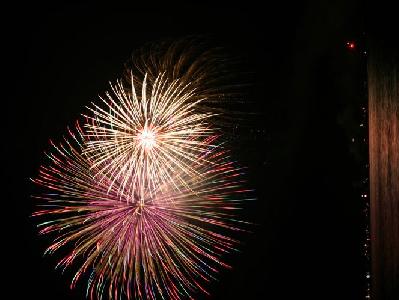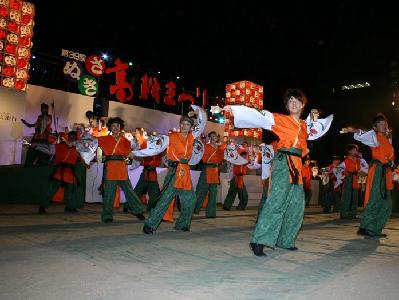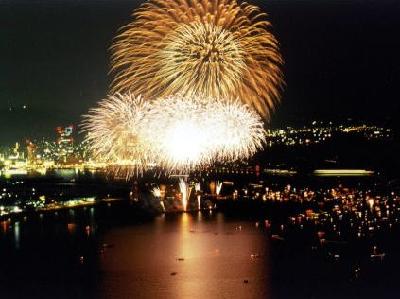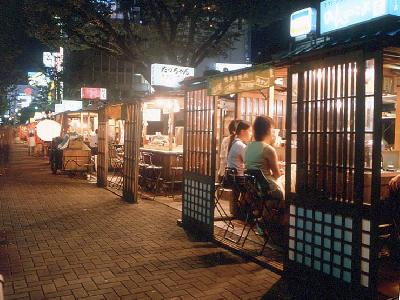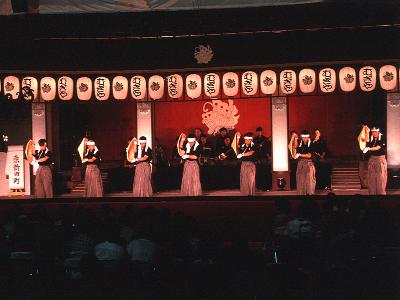|
The Sanuki Takamatsu Festival, held in Takamatsu, is the representative festival of Kagawa Prefecture, and one of Shikoku's 4 major festivals.
This festival is the most popular in Takamatsu, and features a dance known as Sou-Odori as its main event. In Sou-Odori, 4000 people participate in the Takamatsu Dance and the Sanuki Dance in Chuo Park.
Festivities are further enlivened by local performing arts, parades, and Udon noodle-eating contests known as the Udon-lympics!
The climax of this festival is one of the largest fireworks displays in Western Japan. 5,000 fireworks are set off, filling the night sky with colorful sparkling lights.
The Sanuki Takamatsu Festival is a big event filled with festive fun.
This festival is the most popular in Takamatsu, and features a dance known as Sou-Odori as its main event. In Sou-Odori, 4000 people participate in the Takamatsu Dance and the Sanuki Dance in Chuo Park.
Festivities are further enlivened by local performing arts, parades, and Udon noodle-eating contests known as the Udon-lympics!
The climax of this festival is one of the largest fireworks displays in Western Japan. 5,000 fireworks are set off, filling the night sky with colorful sparkling lights.
The Sanuki Takamatsu Festival is a big event filled with festive fun.
| [+ADDRESS] | 
|

